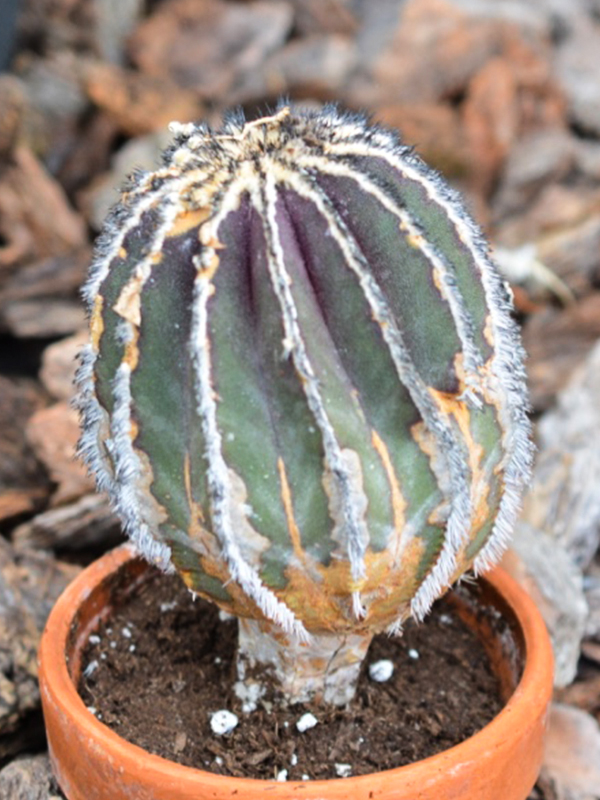
Perennials, Tropicals > Uebelmannia > Uebelmannia pectinifera > Uebelmannia pectinifera
Uebelmannia pectinifera
Quiabo-da-lapa (Portuguese)
Origin: The mountain of Minas Gerais in Brazil.
| Family |
| Cactaceae |
| Genus |
| Uebelmannia |
| Species |
| pectinifera |
| Category |
| Perennials, Tropicals |
| Synonyms |
| Uebelmannia pectinifera |
| USDA Hardiness Zone |
| 10a - 11 |
| Canadian Hardiness Zone |
| Requires cold season protection under glass. |
| RHS Hardiness Zone |
| H1c - H3 |
| Temperature (°C) |
| -5 - 10 |
| Temperature (°F) |
| 23 - 50 |
| Height |
| 0.10 - 1 m |
| Spread |
| 10 - 15 cm |
Photographs
Description and Growing Information
Flowering Period
| General Description |
| Quiabo-da-lapa is a multi-form species and very variable in habitat, where each form is linked to others by populations of plants with intermediate characteristics. |
| Landscape |
| Among potted succulent collections, within rock gardens, as a potted patio or indoor plant or as a specimen. |
| Shape |
| Upright spherical. |
| ID Characteristic |
| At risk of several threats, including over-collection, so it is listed as Endangered. This species is more common in collections than it is in its native habitat. |
| Habitat |
| 650 to 1350 m above sea level. Grows in dry sandy soil, or in rocky areas where there are rock cracks and small flat areas of organic leaf mound and sand. |
| Bark/Stem Description |
| Stems are solitary or (rarely) aggregated, globular to fusiform or elongated or cylindrical. 13 - 40 ribs that are acute, straight, vertical and prominent, not tuberculate, to 0.5 cm high and 0.5 - 0.7 cm broad. Areoles are 0.2 cm in diameter set closely (less than 0.3 cm apart), to form an almost continuous felt-like line down the ribs' sides, with sparse wool when young. Areoles have 1 - 4 central spines and no radial spines. Central spines grow up to 1.5 - 2 cm long, close set and often interlacing, neatly arranged and give a comb-like effect. |
| Flower Description |
| Diurnal, slender funnel-shaped. 0.8 - 1.6 cm long, 0.6 - 1.2 cm in diameter. |
| Fruit Description |
| Pear shaped to cylindrical, 1.5 - 2.5 cm long, 0.6 - 0.8 cm wide, with few glabrescent or slightly woolly bract-scales. |
| Colour Description |
| The bark is dark reddish-green to reddish-brown, or green to grey-green. When grown in cultivation, the colour depends on sun exposure, when grown in shadow they are green with white stripes, while in full sun they are dark frost brown or purple. Wool fibres are grey to brown. Spines are dark brown/grey to black but can also be white to yellow-brown. Flowers are yellow-green. Fruits are violet-red to pink. |
| Texture Description |
| Bark can be with or without waxy plates and rough. |
| Notable Specimens |
| Centennial Conservatory, Thunder Bay, Ontario, Canada. |
